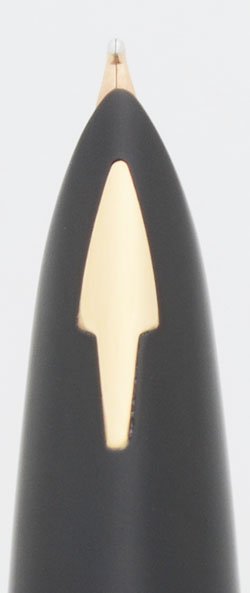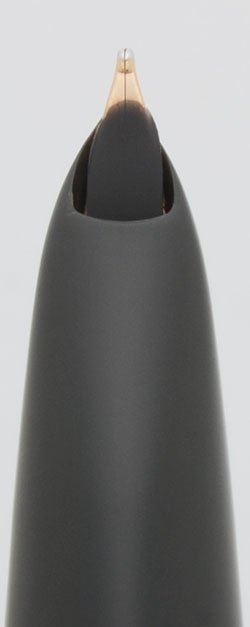Product Description
Type fountain pen
Product Name Parker 61, Mark 2
Manufacturer and Year Parker, made in USA – 1962-69
Length 5-1/4"
Filling System The fountain pen has the capillary filling system which is unique to this model. See further details below.
Color Grey body with a 1/10 12k gold filled cap, gold plated trim, and pearlescent jewels on either end.
Nib MEDIUM-FINE gold nib is smooth with nice tipping material.
Condition Excellent + condition with no cracks, chips, dents, or dings. The pen is very pretty and elegant. The barrel has some long, thin vertical scratch lines from middle down to the end of the barrel. The cap is has a beautiful gold glow with just some microscratching, no brassing or plating wear. The clip is lovely. The pearlescent jewels are clear and unblemished. The imprints are clear, with some scratching over some of the lettering that does not impair its visibility. Scratches on the teflon coated filling system.
A word or two about the Parker 61 Capillary Filling System. If you are not familiar with this unique design, you should read this.
Here is how you fill a Parker 61, and an insight into how the pen actually works. Unscrew the barrel and stick the back end of the pen (aka the capillary cell) into a bottle of ink. Wait a few minutes (probably more like a half hour when you first start one of these older used ones), and let the ink wick up into the capillary cell. The cell contains a sheet of perforated plastic that has been given a 3-D pattern resembling tire tread, and rolled up. The perforations allow ink to seep between the rolled-up layers, and the tread pattern maintains space between the layers. In the middle of this tube, which runs the entire length of the capillary cell, is the feed. To keep things clean, the capillary cell has on a coating of teflonon the outside that is intended to shed ink as the user withdraws the pen from the ink bottle, leaving very little ink to be wiped off. The end of the barrel contains a spring-loaded thingey which covers the open end of the capillary tube, but still allows it to vent.







